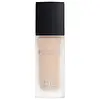What's inside
What's inside
 Key Ingredients
Key Ingredients

 Benefits
Benefits

 Concerns
Concerns

 Ingredients Side-by-side
Ingredients Side-by-side

Water
Skin ConditioningIsododecane
EmollientCyclopentasiloxane
EmollientGlycerin
HumectantCyclohexasiloxane
EmollientMethyl Methacrylate Crosspolymer
Butylene Glycol
HumectantDimethicone
EmollientPEG-9 Polydimethylsiloxyethyl Dimethicone
EmulsifyingDisteardimonium Hectorite
StabilisingBeeswax
Emulsion StabilisingTocopheryl Acetate
AntioxidantPanthenol
Skin ConditioningSilica Dimethyl Silylate
EmollientPolyester-1
Triethoxycaprylylsilane
Disodium EDTA
Ethylhexylglycerin
Skin ConditioningPhenoxyethanol
PreservativeParfum
MaskingBenzyl Salicylate
PerfumingCitronellol
PerfumingHydroxyisohexyl 3-Cyclohexene Carboxaldehyde
MaskingMica
Cosmetic ColorantCI 77891
Cosmetic ColorantIron Oxides
CI 77288
Cosmetic ColorantCI 77007
Cosmetic ColorantWater, Isododecane, Cyclopentasiloxane, Glycerin, Cyclohexasiloxane, Methyl Methacrylate Crosspolymer, Butylene Glycol, Dimethicone, PEG-9 Polydimethylsiloxyethyl Dimethicone, Disteardimonium Hectorite, Beeswax, Tocopheryl Acetate, Panthenol, Silica Dimethyl Silylate, Polyester-1, Triethoxycaprylylsilane, Disodium EDTA, Ethylhexylglycerin, Phenoxyethanol, Parfum, Benzyl Salicylate, Citronellol, Hydroxyisohexyl 3-Cyclohexene Carboxaldehyde, Mica, CI 77891, Iron Oxides, CI 77288, CI 77007
Ethylhexyl Salicylate 3.5%
UV AbsorberTitanium Dioxide 0.94%
Cosmetic ColorantWater
Skin ConditioningMethyl Trimethicone
Skin ConditioningIsododecane
EmollientAlcohol
AntimicrobialSynthetic Fluorphlogopite
Butylene Glycol
HumectantPEG-9 Polydimethylsiloxyethyl Dimethicone
EmulsifyingAcrylates/Polytrimethylsiloxymethacrylate Copolymer
Skin ConditioningSilica
AbrasiveDimethicone
EmollientAcrylates/Dimethicone Copolymer
Skin ConditioningDisteardimonium Hectorite
StabilisingCetyl Dimethicone
EmollientPolyglyceryl-10 Decaisostearate
EmollientSodium Myristoyl Glutamate
CleansingParfum
MaskingPropylene Carbonate
SolventChlorphenesin
AntimicrobialAluminum Hydroxide
EmollientTromethamine
BufferingHydrolyzed Viola Tricolor Extract
Skin ProtectingTocopherol
AntioxidantAlumina
AbrasiveStearic Acid
CleansingTropaeolum Majus Flower/Leaf/Stem Extract
Skin ConditioningRosa Multiflora Fruit Extract
Masking1,2-Hexanediol
Skin ConditioningCaprylyl Glycol
EmollientIris Florentina Root Extract
MaskingSodium Benzoate
MaskingPotassium Sorbate
PreservativeCI 77491
Cosmetic ColorantCI 77492
Cosmetic ColorantCI 77499
Cosmetic ColorantCI 77891
Cosmetic ColorantEthylhexyl Salicylate 3.5%, Titanium Dioxide 0.94%, Water, Methyl Trimethicone, Isododecane, Alcohol, Synthetic Fluorphlogopite, Butylene Glycol, PEG-9 Polydimethylsiloxyethyl Dimethicone, Acrylates/Polytrimethylsiloxymethacrylate Copolymer, Silica, Dimethicone, Acrylates/Dimethicone Copolymer, Disteardimonium Hectorite, Cetyl Dimethicone, Polyglyceryl-10 Decaisostearate, Sodium Myristoyl Glutamate, Parfum, Propylene Carbonate, Chlorphenesin, Aluminum Hydroxide, Tromethamine, Hydrolyzed Viola Tricolor Extract, Tocopherol, Alumina, Stearic Acid, Tropaeolum Majus Flower/Leaf/Stem Extract, Rosa Multiflora Fruit Extract, 1,2-Hexanediol, Caprylyl Glycol, Iris Florentina Root Extract, Sodium Benzoate, Potassium Sorbate, CI 77491, CI 77492, CI 77499, CI 77891
 Reviews
Reviews

Ingredients Explained
These ingredients are found in both products.
Ingredients higher up in an ingredient list are typically present in a larger amount.
Butylene Glycol (or BG) is used within cosmetic products for a few different reasons:
Overall, Butylene Glycol is a safe and well-rounded ingredient that works well with other ingredients.
Though this ingredient works well with most skin types, some people with sensitive skin may experience a reaction such as allergic rashes, closed comedones, or itchiness.
Learn more about Butylene GlycolCi 77891 is a white pigment from Titanium dioxide. It is naturally found in minerals such as rutile and ilmenite.
It's main function is to add a white color to cosmetics. It can also be mixed with other colors to create different shades.
Ci 77891 is commonly found in sunscreens due to its ability to block UV rays.
Learn more about CI 77891Dimethicone is a type of synthetic silicone created from natural materials such as quartz.
What it does:
Dimethicone comes in different viscosities:
Depending on the viscosity, dimethicone has different properties.
Ingredients lists don't always show which type is used, so we recommend reaching out to the brand if you have questions about the viscosity.
This ingredient is unlikely to cause irritation because it does not get absorbed into skin. However, people with silicone allergies should be careful about using this ingredient.
Note: Dimethicone may contribute to pilling. This is because it is not oil or water soluble, so pilling may occur when layered with products. When mixed with heavy oils in a formula, the outcome is also quite greasy.
Learn more about DimethiconeDisteardimonium Hectorite comes from the clay mineral named hectorite. It is used to add thickness to a product.
It can also help stabilize a product by helping to disperse other ingredients.
Hectorite is a rare, white clay mineral.
Learn more about Disteardimonium HectoriteIsododecane is a fragrance, emollient, and solvent.
As an emollient, it helps your skin stay soft and hydrated. Emollients help trap moisture into your skin.
Isododecane's role as a solvent makes it a great texture enhancer. It spreads smoothly on skin and does not leave a sticky feeling behind. Isododecane also helps prevent color transfer in makeup products.
Isododecane is not absorbed into skin.
Learn more about IsododecaneParfum is a catch-all term for an ingredient or more that is used to give a scent to products.
Also called "fragrance", this ingredient can be a blend of hundreds of chemicals or plant oils. This means every product with "fragrance" or "parfum" in the ingredients list is a different mixture.
For instance, Habanolide is a proprietary trade name for a specific aroma chemical. When used as a fragrance ingredient in cosmetics, most aroma chemicals fall under the broad labeling category of “FRAGRANCE” or “PARFUM” according to EU and US regulations.
The term 'parfum' or 'fragrance' is not regulated in many countries. In many cases, it is up to the brand to define this term.
For instance, many brands choose to label themselves as "fragrance-free" because they are not using synthetic fragrances. However, their products may still contain ingredients such as essential oils that are considered a fragrance by INCI standards.
One example is Calendula flower extract. Calendula is an essential oil that still imparts a scent or 'fragrance'.
Depending on the blend, the ingredients in the mixture can cause allergies and sensitivities on the skin. Some ingredients that are known EU allergens include linalool and citronellol.
Parfum can also be used to mask or cover an unpleasant scent.
The bottom line is: not all fragrances/parfum/ingredients are created equally. If you are worried about fragrances, we recommend taking a closer look at an ingredient. And of course, we always recommend speaking with a professional.
Learn more about ParfumPEG-9 Polydimethylsiloxyethyl Dimethicone is a type of silicone.
Water. It's the most common cosmetic ingredient of all. You'll usually see it at the top of ingredient lists, meaning that it makes up the largest part of the product.
So why is it so popular? Water most often acts as a solvent - this means that it helps dissolve other ingredients into the formulation.
You'll also recognize water as that liquid we all need to stay alive. If you see this, drink a glass of water. Stay hydrated!
Learn more about Water